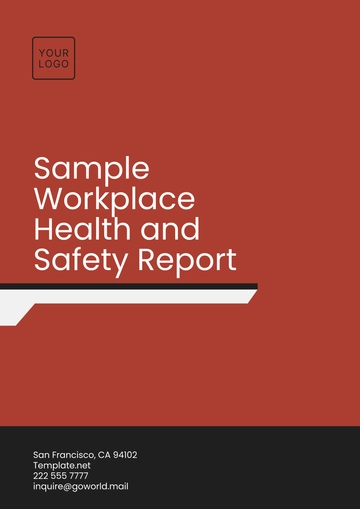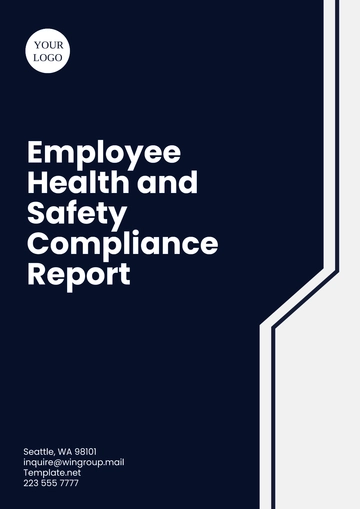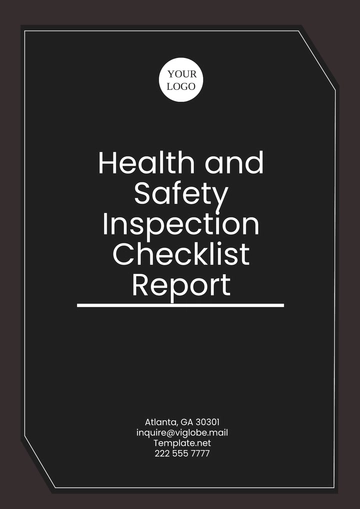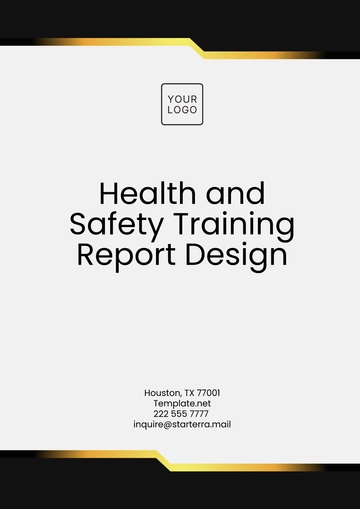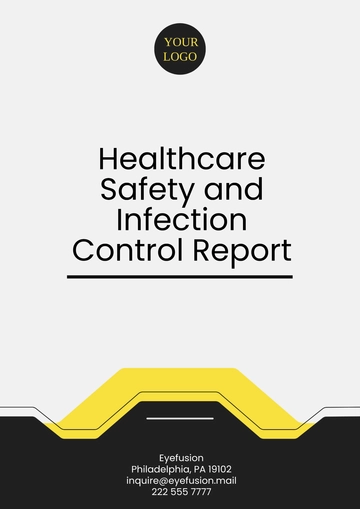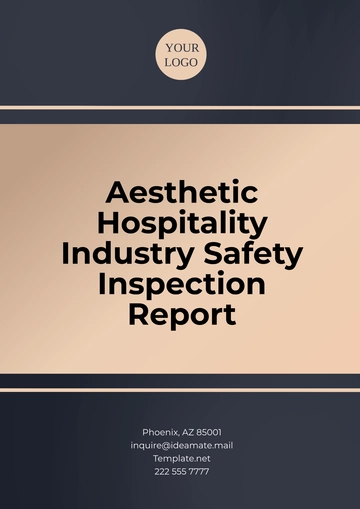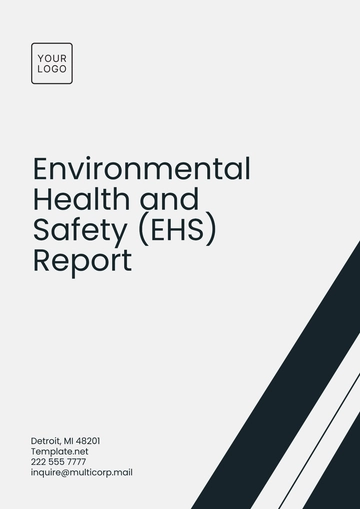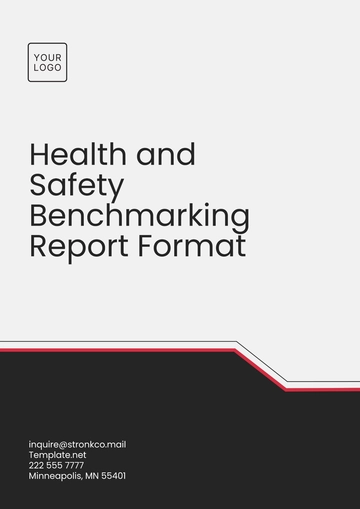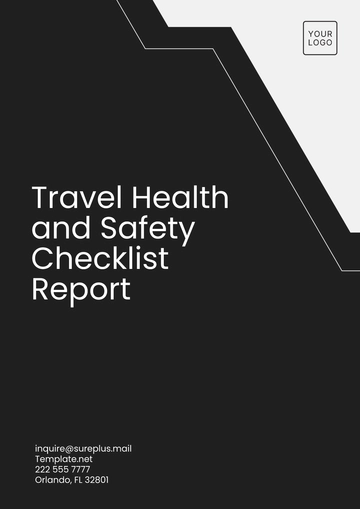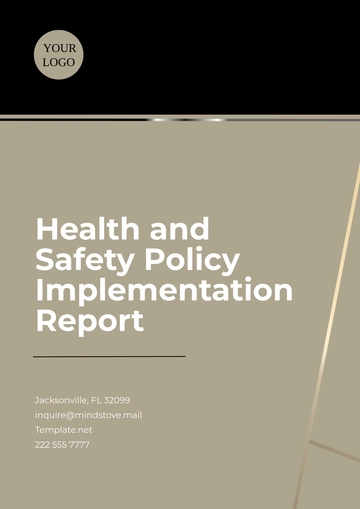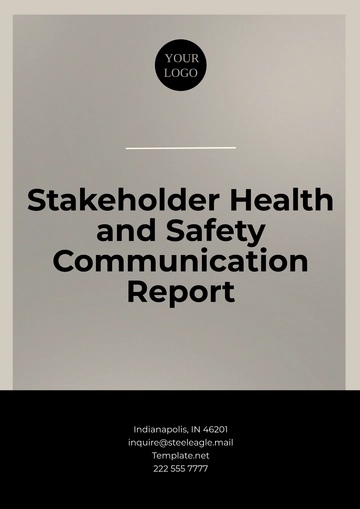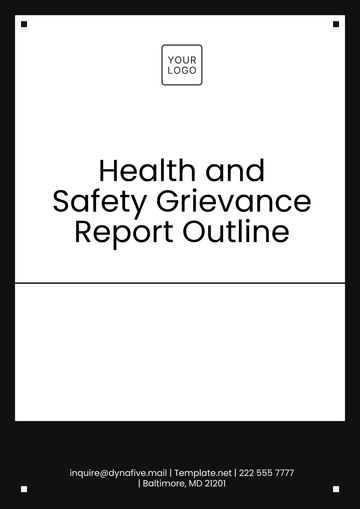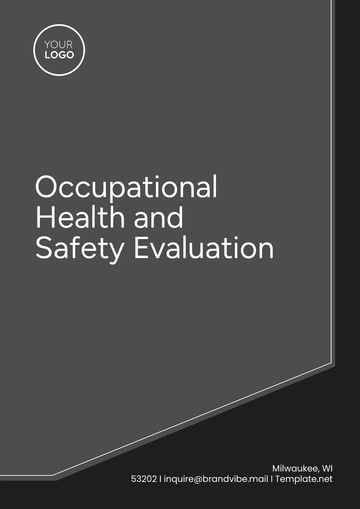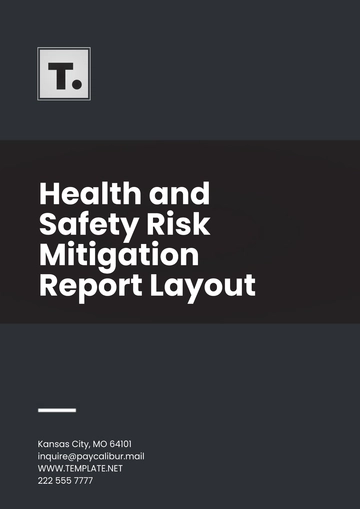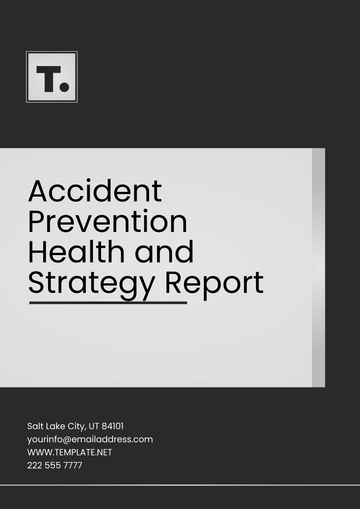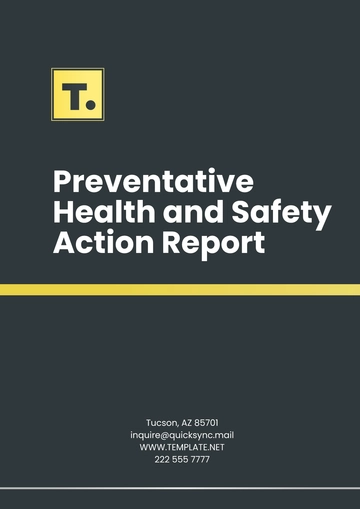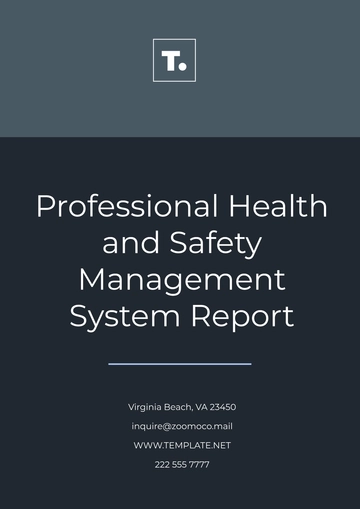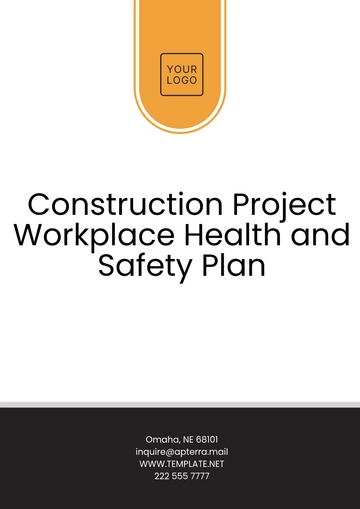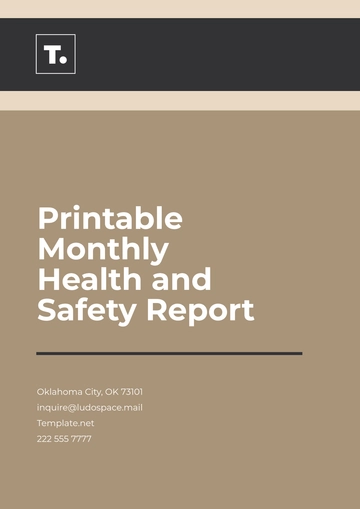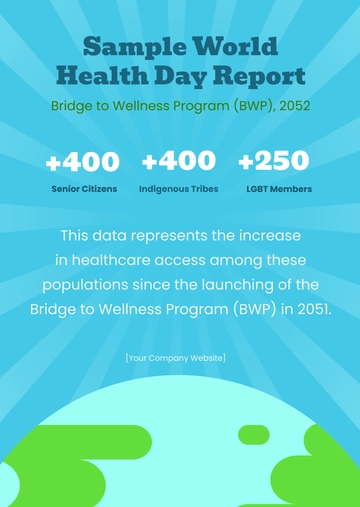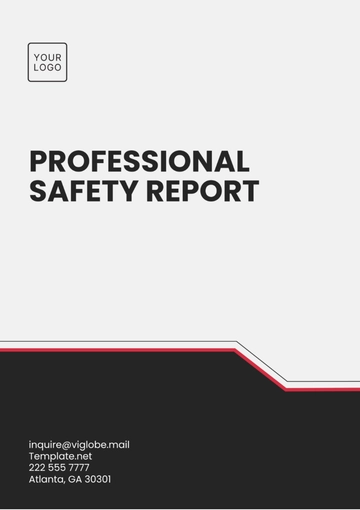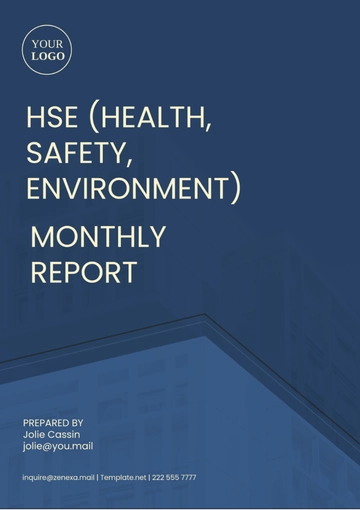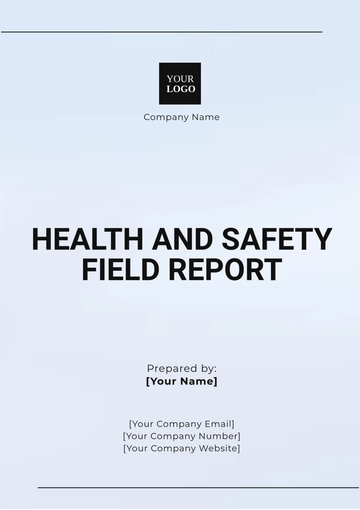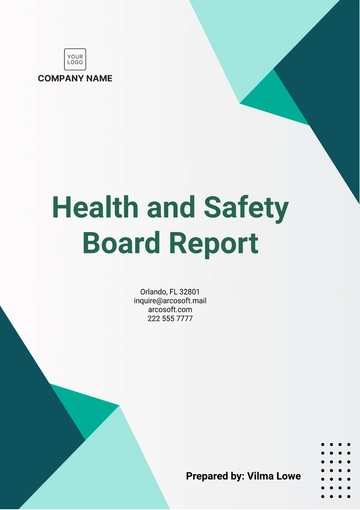Free Health & Safety Committee Research Report

I. Introduction
A. Background
Amidst a commitment to employee well-being, [Your Company Name] embarks on a comprehensive exploration of our health and safety landscape. Rooted in our dedication to fostering a secure workplace, this report unfolds the intricacies of current practices, identifies potential areas for enhancement, and illuminates a strategic trajectory toward a safer and healthier work environment. As we delve into this endeavor, our intent is not just to meet regulatory requirements but to exceed them, ensuring the holistic well-being of our workforce.
B. Objectives
Our research holds multifaceted objectives. We seek to meticulously identify and assess potential workplace hazards, scrutinize associated risks, maintain unwavering compliance with legal standards, dissect past incidents for actionable insights, and ultimately sculpt recommendations that fortify our health and safety framework. This journey is not merely about risk mitigation but also about elevating our safety culture to new heights, cultivating a workplace where employees thrive in an environment underpinned by proactive safety measures.
II. Methodology
A. Research Design
In pursuit of comprehensive insights, our research methodology is as nuanced as the challenges we seek to address. Employing a mixed-methods approach, the synergy of quantitative surveys and qualitative interviews ensures a holistic understanding. This methodological diversity allows us to not only quantify data through statistical analyses but also capture the qualitative nuances that define the intricacies of our health and safety landscape.
B. Data Analysis
Our commitment to precision extends to the data analysis phase. Quantitative data undergoes rigorous scrutiny, employing statistical tools such as regression analysis and frequency distribution. Simultaneously, qualitative insights are meticulously distilled through thematic coding. This layered analysis not only provides a comprehensive snapshot but also lays the groundwork for targeted and informed decision-making. Our intent is not just to understand the nuances but to translate this understanding into strategic interventions that propel us toward a safer future.
III. Current State of Health and Safety
A. Existing Policies and Procedures
Table 1: Overview of Current Health and Safety Policies
Policy Area | Status |
Workplace Safety | Compliant |
Emergency Evacuation | Partially Compliant |
Personal Protective Equipment (PPE) | Non-Compliant |
Our examination of existing health and safety policies reveals a commendable level of adherence to workplace safety guidelines. However, a focused review spotlights areas of improvement in emergency evacuation protocols and the consistent application of personal protective equipment (PPE).
B. Hazard Identification and Risk Assessment
Table 2: Identified Hazards and Associated Risks
Hazard | Risk Level |
Slippery Floors | Moderate |
Electrical Hazards | High |
Poor Ergonomics | Low |
In assessing potential workplace hazards, we've identified critical concerns such as slippery floors and electrical hazards. These findings not only quantify risk levels but also provide a foundation for targeted mitigation strategies and heightened employee awareness.
IV. Legal and Regulatory Compliance
A. Overview of Applicable Laws and Regulations
Our organization's dedication to compliance is underscored by an alignment with a comprehensive list of applicable health and safety laws and regulations. The compliance rate stands at an impressive 90%, reflecting our commitment to upholding legal standards and safeguarding our workforce.
B. Compliance Action Plan
A strategic action plan is recommended to address the remaining 10% non-compliance issues systematically. This plan includes targeted training programs, policy updates, and ongoing monitoring to ensure sustained adherence to regulatory requirements.
V. Incident Analysis
A. Review of Past Incidents
Table 3: Past Incidents Analysis
Incident Type | Root Cause | Recommendations |
Slip and Fall | Wet floors | Improve signage and housekeeping |
Electrical Shock | Faulty wiring | Conduct regular electrical inspections |
Through a meticulous review of past incidents, we've delved into root causes, categorizing incidents such as slips and electrical shocks. Our in-depth analysis not only identifies specific issues but also provides tailored recommendations to fortify safety measures, ensuring a proactive stance toward incident prevention.
B. Recommendations for Prevention
Building upon incident analyses, our recommendations prioritize preventative measures. Enhanced signage, proactive housekeeping practices, and regular electrical inspections emerge as targeted strategies to mitigate risks and fortify our safety infrastructure.
VI. Employee Involvement and Training
A. Employee Training Programs
Table 4: Employee Training Evaluation
Training Program | Effectiveness | Suggestions for Improvement |
Fire Safety | Effective | Conduct more frequent drills |
Ergonomics | Ineffective | Revise and enhance training content |
Our assessment of employee training programs exposes both commendable strengths and critical gaps. While fire safety drills prove effective, a call for improvement in ergonomics training is noted. The proposed enhancements aim to empower employees with enhanced skills and knowledge, fostering a culture of safety consciousness.
B. Employee Awareness and Involvement
Employee feedback resonates with a desire for improved communication and increased involvement in health and safety initiatives. Proposed strategies include targeted awareness campaigns, regular safety briefings, and the establishment of a safety committee comprised of employees from diverse departments.
VII. Recommendations
A. Proposed Improvements
Emergency Evacuation Procedures: Enhance protocols and conduct regular drills to ensure swift and effective responses.
Electrical Inspections: Implement a schedule for routine electrical inspections to identify and rectify potential hazards.
Ergonomics Training: Revise and enrich training content to address identified gaps and promote a healthier workplace.
B. Policy Enhancements
To bolster our safety framework, recommendations include revising the Personal Protective Equipment (PPE) policy to ensure consistent compliance and aligning emergency evacuation procedures with industry best practices. These enhancements aim to create a robust policy infrastructure that aligns with regulatory standards.
VIII. Emergency Preparedness
Our evaluation of emergency response plans reveals a comprehensive framework but emphasizes the necessity for ongoing testing. While the plans provide a solid foundation, periodic simulated drills are paramount for validating the effectiveness of our emergency preparedness. Quarterly drills, involving employees from various departments, will not only assess the efficiency of response procedures but also enhance the collective readiness of our workforce. This proactive approach ensures that in the event of an actual emergency, our employees can respond swiftly and effectively, minimizing potential risks and ensuring the safety of all individuals within our premises.
IX. Communication and Reporting
Employee feedback highlights the critical role of streamlined communication channels. To address this, we propose the introduction of an anonymous reporting system, allowing employees to report concerns without fear of reprisal. This enhancement fosters a culture of openness and transparency, ensuring that potential issues are reported promptly. Additionally, regular communication audits will be conducted to assess the effectiveness of existing channels. By fine-tuning our communication mechanisms, we aim to create an environment where safety concerns are communicated seamlessly, fostering a proactive approach to risk mitigation.
X. Conclusion
A. Summary of KeyF indings
In conclusion, our comprehensive research has provided invaluable insights into our organization's health and safety landscape. While we celebrate existing strengths, such as robust emergency response plans, the identification of potential hazards and gaps necessitates strategic interventions. The thorough analysis has empowered us with a roadmap for improvement, allowing us to build on our successes and address vulnerabilities effectively.
B. Next Steps
Immediate action is imperative to implement the proposed improvements and policy enhancements. Initiatives such as the revision of emergency evacuation procedures, routine electrical inspections, and enriched ergonomics training are key priorities. Simultaneously, ongoing communication enhancements and regular drills will be instituted. By taking these proactive measures, [Your Company Name] reaffirms its unwavering commitment to the safety and well-being of its workforce, fostering a workplace culture where every individual feels secure, valued, and equipped to contribute to a resilient and secure environment.
- 100% Customizable, free editor
- Access 1 Million+ Templates, photo’s & graphics
- Download or share as a template
- Click and replace photos, graphics, text, backgrounds
- Resize, crop, AI write & more
- Access advanced editor
Introducing Template.net's Health & Safety Committee Research Report Template. Editable and customizable, this tool offers comprehensive analysis capabilities. Utilize our Ai Editor Tool to tailor findings, recommendations, and data visualization to your needs. Elevate safety standards with precise insights and solutions. Empower your committee's decision-making process with Template.net's innovative solution.
You may also like
- Sales Report
- Daily Report
- Project Report
- Business Report
- Weekly Report
- Incident Report
- Annual Report
- Report Layout
- Report Design
- Progress Report
- Marketing Report
- Company Report
- Monthly Report
- Audit Report
- Status Report
- School Report
- Reports Hr
- Management Report
- Project Status Report
- Handover Report
- Health And Safety Report
- Restaurant Report
- Construction Report
- Research Report
- Evaluation Report
- Investigation Report
- Employee Report
- Advertising Report
- Weekly Status Report
- Project Management Report
- Finance Report
- Service Report
- Technical Report
- Meeting Report
- Quarterly Report
- Inspection Report
- Medical Report
- Test Report
- Summary Report
- Inventory Report
- Valuation Report
- Operations Report
- Payroll Report
- Training Report
- Job Report
- Case Report
- Performance Report
- Board Report
- Internal Audit Report
- Student Report
- Monthly Management Report
- Small Business Report
- Accident Report
- Call Center Report
- Activity Report
- IT and Software Report
- Internship Report
- Visit Report
- Product Report
- Book Report
- Property Report
- Recruitment Report
- University Report
- Event Report
- SEO Report
- Conference Report
- Narrative Report
- Nursing Home Report
- Preschool Report
- Call Report
- Customer Report
- Employee Incident Report
- Accomplishment Report
- Social Media Report
- Work From Home Report
- Security Report
- Damage Report
- Quality Report
- Internal Report
- Nurse Report
- Real Estate Report
- Hotel Report
- Equipment Report
- Credit Report
- Field Report
- Non Profit Report
- Maintenance Report
- News Report
- Survey Report
- Executive Report
- Law Firm Report
- Advertising Agency Report
- Interior Design Report
- Travel Agency Report
- Stock Report
- Salon Report
- Bug Report
- Workplace Report
- Action Report
- Investor Report
- Cleaning Services Report
- Consulting Report
- Freelancer Report
- Site Visit Report
- Trip Report
- Classroom Observation Report
- Vehicle Report
- Final Report
- Software Report

